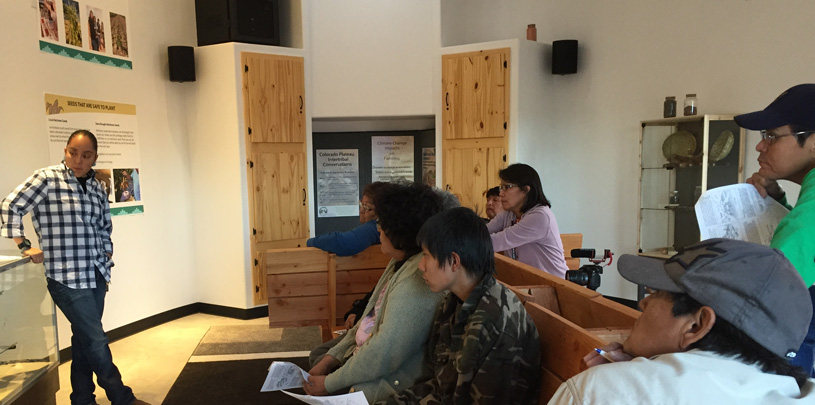

by Stacie Tsingine, Native American Intertribal Gathering Associate
And in this arid climate, every drop counts. A few weeks ago, we held our first-ever workshop on Irrigation Systems at the Intertribal Learning Center to explore how traditional tribal methods can help modern farmers grow smarter and better.
First, a little history. The Zuni, Tohono O’Odham, Hopi, Navajo, Havasupai and Hualapai have irrigated and planted across the plateau, when and where water was accessible to us, for centuries. We've used storm runoff, planted alongside streams and riverbeds, and diverted water using canal systems, similar to techniques employed in arid climates in India, Iran, and North Africa.
From water catchment to planting in alluvial fans (fan-shaped deposits of sediment built up by streams) to flood irrigation, in this climate it pays to be creative and resourceful when it comes to making the most of this precious resource.
The main source of water in the Moenkopi/Tuba City area, where the Learning Center is located, is the Moenkopi Wash and Pasture Canyon Springs, a small stream that flows with runoff from Black Mesa. Both Hopi and Navajo farmers use the stream, mainly for flood irrigation using a communal canal system to flood their fields and neighboring plots.
Local farmers and community members weighed in on drip irrigation techniques, and the best ways to solve problems in their fields, such as what to do when one side of a field is full of water while the other stays bone dry, and what irrigation methods are popular now.
"How can I set up a drip irrigation system at home?" One Hopi elder wanted to know.
Traditional drip irrigation is simple. Farmers fill a bucket with water, and, using gravity, allow the water to descend the drip lines, saturating the soil slowly and giving the roots time to absorb the moisture, minimizing evaporation.
The Learning Center has a wealth of information to share with local farmers and community members, but most of all we want to create a forum for discussion. We want to learn and share the traditional knowledge that has enabled Native peoples to live productively for hundreds of years and figure out how best to keep it alive.
I for one truly enjoyed listening to the group and was impressed by the farmers' willingness to support each other, working to achieve common goals: growing strong crops, preserving Native languages, stories, and traditions, and maintaining a healthy lifestyle.
A small victory in the legal case challenging Daneros uranium mine, near Bears Ears National Monument.
Read MoreMugs, handmade soaps, high fashion, jewelry and more. There's something for everyone on your holiday shopping list.
Read MoreBears Ears petroglyph panels and cultural sites protected by new proposed management plan.
Read More